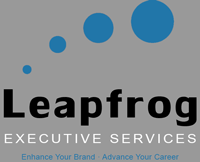CEO Tenure, Turmoil, and Turnover
Category : 2019
If current trends remain, over 430 people will step into new CEO roles in big companies this year. While HBO, Symantec, and Wells Fargo already used some of the 2019 opportunity inventory, there should be an abundance of openings in the second half of the year. Jocoseness (sounds more sophisticated than humor) aside, knowing how to traverse the changing CEO terrain is critical to your future success.
It helps if you know the back-story. A record 17.5% of CEOs at the world’s 2,500 largest companies (by market cap) left their jobs in 2018. Two-thirds of the turnovers were planned successions. Twenty percent were forced, consistent with past trends. The noticeable change in 2018 was that for the first time, more CEO’s (39 percent) were fired for “ethical lapses” than for poor financial results or board tensions. CEO misbehavior or improper conduct by other employees in these “lapses” included fraud, bribery, sexual indiscretions, insider trading, and inflated resumes. This doesn’t mean today’s CEOs and their teams are less ethical than their predecessors – it does mean it is harder today to get away with misbehavior now than in the past.
While the median tenure for top executives has averaged five years over the past two decades, nearly 20 percent of all CEOs remain for ten or more years. While longevity can positively impact long-term results, transitioning those top execs doesn’t. PWC found that “69 percent of successors who replaced a long serving CEO in the top performance quartile ended up in the bottom two performance quartiles.” Per-Ola Karlsson, partner and leader of PWC’s strategy business noted, “Their successors typically both deliver lower returns to shareholders and are noticeably more likely to be dismissed than the legend they succeeded as well as their peers.”[i]
Whether the company is large or small, whatever created the open chair, here are five ways to make the most of a new CEO opportunity-now or later.
- Determine if the board wants change-or wants to talk about change. Especially if you are replacing a founding CEO, get clear consensus from the board about whether they expect you to extend the former CEO’s legacy or create your own. Even when financial performance and market demands press for change, some board members may resist giving you the freedom needed to accomplish what you were hired to do. Taking responsibility without getting the needed authority is a path to disaster.
- Identify critical relationships and invest in them. Your external network will help you keep your sanity. Your internal network will determine if you keep your job. While you invest in building relationships with your team, quickly determine who influences those you lead and make fostering those relationships a priority. Knowledge is often stored in unlikely places. Find out who really knows what’s going on in the company and buy that person lots of coffee.
- Let go of what you did in a former company-no one cares. People that spend a lot of time talking about the past aren’t considered experienced-they they’re considered “out of touch.” When the resident in the top chair changes, people want to know what you will do – not what you did.
- Expect people to be self-protective. Our brains perceive life events as threats or rewards. Most often, major changes are initially viewed as threats and our fight or flee instinct goes to work. During a time of corporate musical chairs people desperately want to know when the music stops there will be a chair for them. Don’t waste time telling people to trust you. Show them they can. Their self-protective mechanism will remain in place until they decide to let it down.
- Lead them through digital transformation and AI – or figure out how to get it done. Anyone stepping into a CEO spot needs to be prepared to navigate the rapids of digital transformation and artificial intelligence. A long-tenured CEO may have made self-preservation a priority over technology acceleration, leaving you some catching up to do. If you lack the expertise-get someone who has it to help you lead the way. In digital transformation Master Yoda is right-“Do. Or do not. There is no try.”
